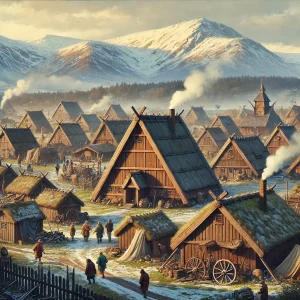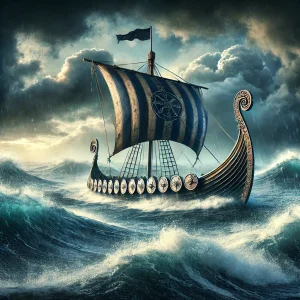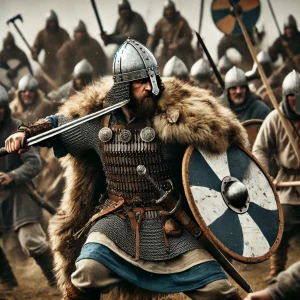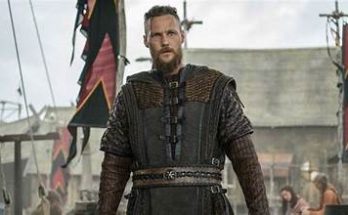Table of Contents
Introduction
For centuries, the Vikings have been portrayed as ruthless warriors, storming across Europe in horned helmets. But the real history of the Vikings is far more complex. Originating from Scandinavia, they were not just raiders but also skilled traders, explorers, and settlers who reshaped medieval Europe. From the icy fjords of Norway to the shores of North America, their influence extended far beyond battlefield conquests. This article uncovers who the Vikings truly were, where they came from, and how their legacy continues to shape the modern world.
Who Were the Vikings?
The Vikings were seafaring Scandinavian warriors and traders from modern-day Norway, Sweden, and Denmark. Their era, known as the Viking Age, spanned from approximately 793 AD to 1066 AD. Though often associated with raiding, the Vikings were also skilled shipbuilders, merchants, and settlers who played a crucial role in shaping European history.
It is essential to distinguish between the Vikings and the Norse people. While all Vikings were Norse, not all Norse people were Vikings. The term “Viking” referred to those who participated in overseas expeditions, whether for trade, exploration, or conquest.
Where Did the Vikings Come From?

Viking Origins and Homeland
The Vikings originated from Scandinavia, a region that includes Norway, Sweden, and Denmark. Their homeland was characterized by harsh climates, rugged landscapes, and an abundance of coastline, making them highly dependent on the sea for survival. This maritime environment fostered their advanced shipbuilding techniques and navigational skills, allowing them to travel great distances.
Why Did the Vikings Expand?
Several factors contributed to the Viking expansion beyond Scandinavia:
- Overpopulation and Land Scarcity – Limited arable land forced many Vikings to seek new territories.
- Political Instability – Internal conflicts and power struggles led some warriors to explore foreign lands.
- Trade and Wealth – The Vikings sought new trade routes and valuable goods such as silver, spices, and textiles.
- Technological Advancements – Their innovative longships enabled them to navigate both open seas and shallow rivers, making raids and trade more efficient.
10 Incredible Facts about Thor, the God of Thunder in Norse Mythology
The Viking Age: Expansion and Exploration
The Viking Age began with the infamous raid on Lindisfarne in 793 AD, marking the start of their widespread expansion across Europe and beyond.
Viking Raids and Settlements
- Britain and Ireland – Vikings frequently raided monasteries along the coast, later establishing settlements in York, Dublin, and other key locations.
- France – They attacked Paris and eventually secured land in Normandy (which derives its name from “Northmen”).
- Eastern Europe and Russia – Vikings, known as the Varangians, traveled along the rivers of Eastern Europe, forming trade networks and even ruling parts of modern-day Russia.
- Iceland and Greenland – Norse settlers founded colonies in these remote lands, adapting to harsh environments.
- Vinland (North America) – Leif Erikson led an expedition to what is now Canada, making the Vikings the first Europeans to reach North America.

Viking Trade Routes and Cultural Exchange
While raiding was a significant part of Viking history, they were also skilled traders. Viking trade routes extended from the Middle East to the British Isles, dealing in goods such as furs, silk, amber, and slaves. They played a crucial role in connecting different cultures, influencing art, language, and governance.
Viking Society and Culture
Social Structure
Viking society was hierarchical, consisting of three main classes:
- Jarls – The noble class, including chieftains and wealthy landowners.
- Karls – Free farmers, traders, and warriors who formed the majority of the population.
- Thralls – Enslaved individuals who performed manual labor.
10 highlights from Ubbe Ragnarsson: Viking Warrior
Daily Life of the Vikings
Most Vikings were farmers, craftsmen, and traders. They lived in longhouses made of wood and turf, and their diet included fish, meat, grains, and dairy. Women played an essential role in managing households and sometimes even wielded political influence.

Viking Religion and Mythology
The Vikings followed Norse mythology, worshipping gods such as Odin, Thor, and Freyja. Their belief in Valhalla, an afterlife reserved for fallen warriors, fueled their fearless approach to battle. Runes were their writing system, often used for inscriptions and religious purposes.
The Decline of the Vikings
Several factors led to the end of the Viking Age:
- Christianization – Many Viking leaders converted to Christianity, leading to cultural shifts and the decline of pagan practices.
- Stronger European Kingdoms – As European nations became more organized, they developed stronger defenses against Viking invasions.
- Internal Conflicts – Power struggles within Scandinavian kingdoms weakened their ability to launch large-scale expeditions.
- The Battle of Stamford Bridge (1066 AD) – This battle marked the last major Viking attempt at conquest in England, effectively signaling the end of their dominance.
Viking Legacy in the Modern World
Though the Viking Age ended, their influence persists in several ways:
- Language: Many English words, such as “skull,” “husband,” and “window,” have Norse origins.
- Genetics: DNA studies reveal Viking ancestry in regions they settled.
- Culture: Viking traditions inspire modern festivals, TV shows, and historical reenactments.
- Navigation and Shipbuilding: Their maritime expertise influenced naval technology for centuries.
Conclusion
The real history of the Vikings goes far beyond the stereotypes of bloodthirsty raiders. They were explorers, traders, and innovators who shaped the course of history. Their origins in Scandinavia, their vast trade networks, and their fearless expeditions left an undeniable mark on the world. Understanding who the Vikings truly were allows us to appreciate their remarkable contributions to civilization.




